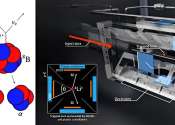Radioactive decay is key ingredient behind Earth's heat
Nearly half of the Earth's heat comes from the radioactive decay of materials inside, according to a large international research collaboration that includes a Kansas State University physicist.









